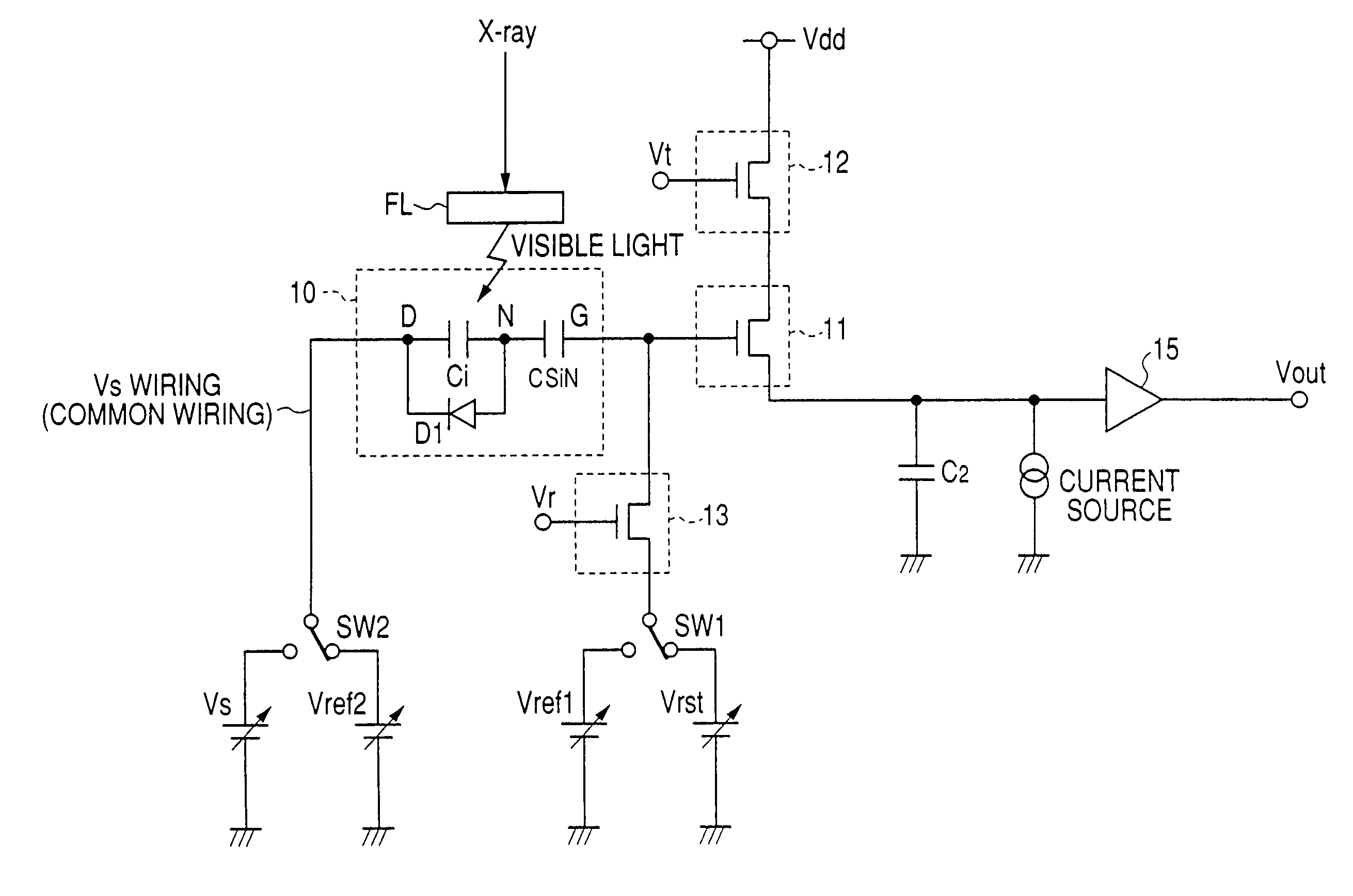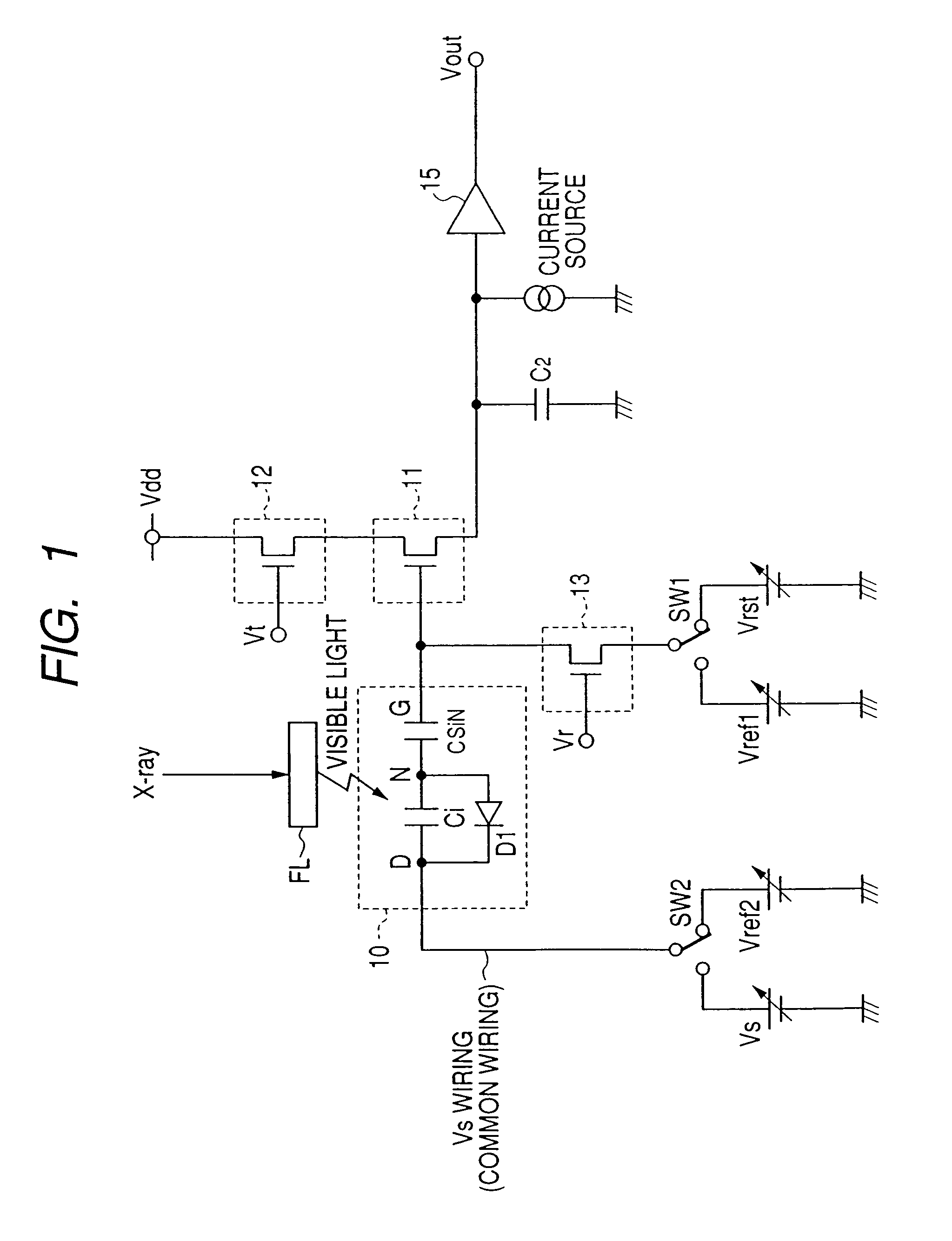Radiation image pick-up device and radiation image pick-up method
a technology of radiation image and pickup device, which is applied in the direction of radioation controlled devices, television systems, instruments, etc., can solve the problems of reduced frame frequency, reduced operation speed, and current may not flow, and achieve stable and high-speed moving image photographing, reduce cost and dark current, and reduce voltage fluctuations. effect of gnd
- Summary
- Abstract
- Description
- Claims
- Application Information
AI Technical Summary
Benefits of technology
Problems solved by technology
Method used
Image
Examples
Embodiment Construction
[0103]Now will be described a radiation image pick-up device and a radiation image pick-up method embodying the invention with reference to accompanying drawings. The following description of the preferred embodiment of the invention will refer to a radiation image pick-up device having a substrate over which a photoelectric conversion array is formed, the device using, as in the conventional device described above, MIS-type photoelectric conversion elements and, as the semiconductor material for field effect transistors, an amorphous silicon semiconductor film. Although the embodiment of the invention to be described uses the X-ray as radiations, the invention is not limited to them but the applicable radiations include electromagnetic waves such as the γ-ray as well as the α-ray and the β-ray.
[0104]FIG. 1 is a circuit diagram of a one-pixel equivalent of an X-ray image pick-up device in the preferred embodiment of the invention.
[0105]As shown in FIG. 1, an MIS-type photoelectric c...
PUM
 Login to View More
Login to View More Abstract
Description
Claims
Application Information
 Login to View More
Login to View More - R&D
- Intellectual Property
- Life Sciences
- Materials
- Tech Scout
- Unparalleled Data Quality
- Higher Quality Content
- 60% Fewer Hallucinations
Browse by: Latest US Patents, China's latest patents, Technical Efficacy Thesaurus, Application Domain, Technology Topic, Popular Technical Reports.
© 2025 PatSnap. All rights reserved.Legal|Privacy policy|Modern Slavery Act Transparency Statement|Sitemap|About US| Contact US: help@patsnap.com



